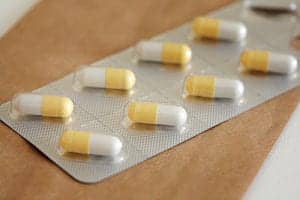A new study finds that continuous positive airway pressure (CPAP), well established as an effective treatment for severe obstructive sleep apnea (OSA), is also effective in patients with mild and moderately severe OSA and daytime sleepiness.
"The evidence for the efficacy of CPAP in patients with milder OSA is limited and conflicting," said lead author Terri E. Weaver, PhD, RN, professor and dean of the University of Illinois at Chicago College of Nursing. "Our multi-site, double-blind, randomized trial, the first placebo-controlled study to use sham CPAP in sleepy patients with mild to moderate OSA, shows that CPAP treatment effectively reduces symptoms and improves quality of life in these patients, the largest segment of the OSA population."
The findings were published in the American Thoracic Society’s American Journal of Respiratory and Critical Care Medicine.
In the study, 239 patients with newly diagnosed milder OSA and self-reported daytime sleepiness (an Epworth Sleepiness Scale (ESS) score > 10) were randomized to 8 weeks of active or sham CPAP treatment. After the 8-week intervention, patients in the sham arm were crossed over to 8 weeks of active treatment. The primary outcome measure was total score on the Functional Outcomes of Sleep Questionnaire (FOSQ), which measures the impact of daytime sleepiness on activities of daily living.
The adjusted mean change in FOSQ total score after the initial 8-week intervention was 0.89 for actively treated patients and -0.06 for sham-treated patients (p = 0.006). Mean improvement in FOSQ total score from the beginning to the end of the cross-over phase of the study was 1.73 ± 2.50 (p <0.00001). Significant improvements with active treatment were also seen in ESS scores, Physical Component scores on the Short-Form 36 health survey, and Total Mood Disturbance scores on the Profile of Mood States scale.
"The improvements we saw were highly significant and clinically relevant," said Weaver. "In addition, our study was conducted at both large and smaller clinical practice sites, making our results highly generalizable."
The study had some limitations, including a short mean duration of active daily CPAP treatment (4.0 ± 2.0 hours/day) and a lower mean duration of sham daily CPAP treatment (3.1 ± 2.1 hours/day).
"Given the high prevalence of OSA, our study suggests that there is significant value in treating sleepy patients with mild to moderate disease," concluded Weaver. "CPAP therapy, the primary treatment for OSA, is highly effective and confers significant health benefits in these patients."
Source: American Thoracic Society









